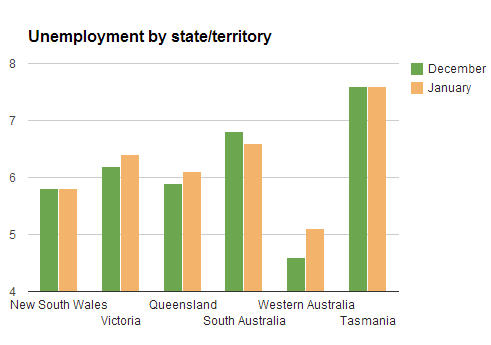Mining job cuts push Australian unemployment rate to 10-year high
For the first time in a decade, Australia’s unemployment rate has hit 6%.
According to the Australian Bureau of Statistics’ latest seasonally adjusted figures, employment fell by 3,700 to 11.46 million in January, adding to December losses.
The mining sector is partly to blame for the labour market’s weakness. Over the past year Australia’s mining boom has died down, resulting in thousands of job losses.
Major miners including BHP Billiton, Peabody Energy, and Glencore Xstarta have all slashed their workforces.
Looking at the January 2014 labour data shows that some of Australia’s biggest mining jurisdictions were hit especially hard, as the Wall Street Journal pointed out.

Australian unemployment rates, December 2013 and January 2014 | Based on data obtained from the Australian Bureau of Statistics
In Queensland – where just last week 230 coal miners lost their jobs – the unemployment rate rose from 5.9% in December to 6.1% the next month.
Meanwhile, Western Australia’s unemployment rate jumped from 4.6% to 5.1% in January. Western Australia produces more than 90% of the country’s iron ore, making it one of the world’s biggest iron ore exporters.
In New South Wales, where mining is less significant, the jobless rate was unchanged. In South Australia it actually fell by 0.5%.
But in Victoria where car manufacturers recently announced major job cuts, the jobless rate rose by 0.2% to 6.4%.
Tasmania still has the country’s highest unemployment rate of 7.6%.
{{ commodity.name }}
{{ post.title }}
{{ post.date }}

Comments